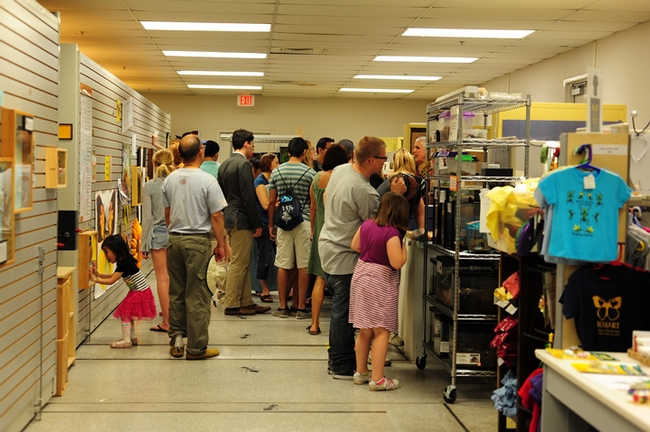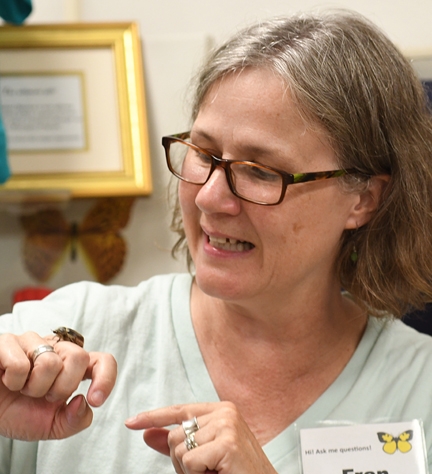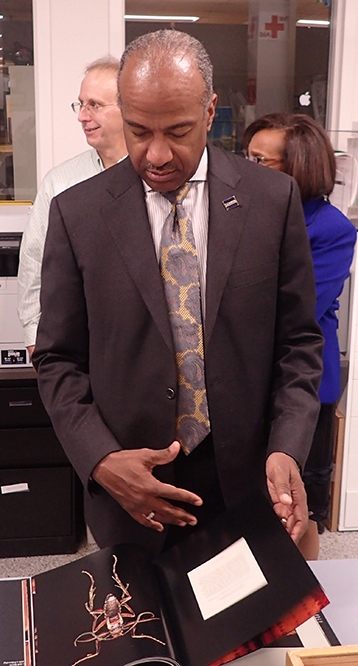- Author: Kathy Keatley Garvey
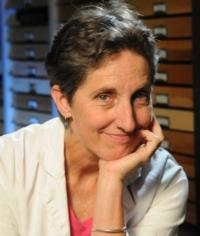
That would be the Indian domino cockroach, Therea petiveriana, also variously called the desert cockroach or seven-spotted cockroach.
It's one of the critters in the Bohart Museum's live "petting zoo," which also includes Madagascar hissing cockroaches, walking sticks or stick insects, and tarantulas.
A sign reveals: "These charismatic roaches live in the leaf litter of the scrub forests of Southern India.They primarily scavenge on leaf litter, dropped fruit, and the occasional yummy source of protein (usually dead insects). Their bright, black and white patterning is not for camouflage but instead to mimic the aggressive six-spot ground beetle."
That would be the aggressive ground beetle Anthia sexguttata known for its strong defenses, including the ability to spray chemical irritants.
The Bohart Museum, founded by noted entomologist Richard M. Bohart (1913-2007), houses a global collection of nearly eight million specimens. It is also the home of the seventh largest insect collection in North America, and the California Insect Survey, a storehouse of insect biodiversity. In addition, the Bohart maintains a year-around gift shop stocked with t-shirts, sweatshirts, jewelry, posters, stuffed toy animals (think water bears or tardigrades and other critters) books, insect-collecting equipment and more.
"We are proud of the Bohart Museum's strong tradition of public outreach," wrote director Lynn Kimsey in a year-end report. "In the last year alone, we connected with more than 13,000 visitors, both at the museum and through programs and traveling exhibits to schools and public events. We answer more than 1000 questions about insects, spiders and their relatives every year, guiding consumers to take a deep breath or use appropriate and cost-effective control strategies. Helping people understand insects, and lose their fear of them, is one of the things we do best."
Want to become a member to help support its work? The Bohart Museum Society offers the following membership categories:
- Individual member, $25
- Student, $15 (one)
- $25 for student family
- Family, $40
- Patron, $100
Additional contributions to the Bohart Museum of Entomology endowment are very much welcome. Contributions are tax-deductible. Checks should be made out to the "Bohart Museum Society" and mailed to:
Bohart Museum of Entomology
Room 1124, Academic Surge Building, Crocker Lane
University of California, Davis
Davis, Calif. 95616.
The insect museum is open to the public Mondays through Thursdays from 9 a.m. to noon and 1 to 5 p.m., except on holidays. Visiting hours will end at 5 p.m., Dec. 16 and will resume at 9 a.m. on Jan. 6. The Bohart will be closed to the public from Dec. 17 to Jan. 5. More information on the Bohart Museum is available on the website at http://bohart.ucdavis.edu or by contacting (530) 752-0493 or bmuseum@ucdavis.edu.
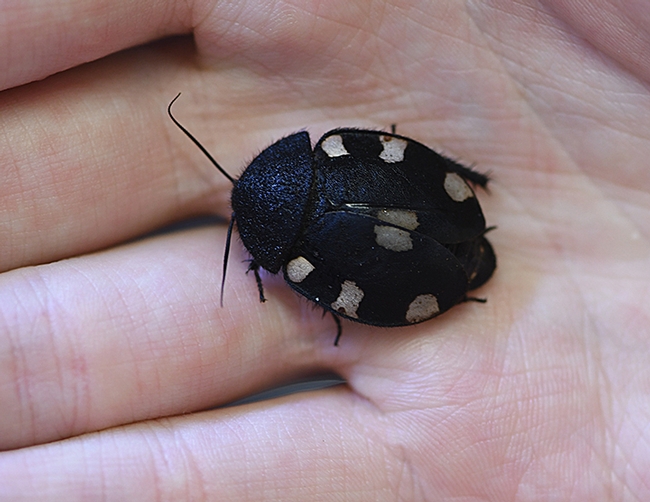
- Author: Kathy Keatley Garvey
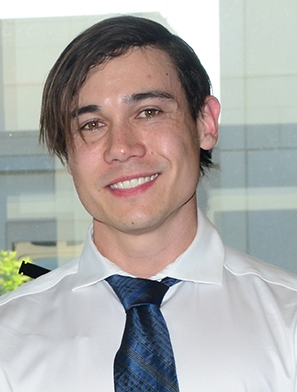
Entomologists at the University of California, Davis, will share their love of insects with fairgoers at the 144th annual Dixon May Fair, which opened today (Thursday, May 9) and continues through Sunday, May 12.
Have a question about insects?
Entomologist Jeff Smith, who curates the Lepitopdera (butterfly and moth) section at the Bohart Museum of Entomology, UC Davis, and Alex Dedmon, a forensic entomologist and doctoral student at UC Davis, will be showing bee, butterfly, dragonfly and other specimens, and live insects from the "petting zoo," including walking sticks and Madagascar hissing cockroaches. Fairgoers are encouraged to hold them, photograph them and ask questions.
Smith and Dedmon will be at the fair on Saturday, May 11 from 11 a.m. to 3 p.m. in the Floriculture Building. Smith was honored in 2015 as a "Friend of the College," a coveted award presented by the College of Agricultural and Environmental Sciences. He saved the museum some $160,000 over a 27-year period through his volunteer service (See news story.)
Dedmon studies with forensic entomologist Robert Kimsey, an adjunct professor in the UC Davis Department of Entomology and Neamtology.
The Bohart Museum, directed by Lynn Kimsey, professor of entomology, is the home of nearly eight million insect specimens, plus a year-around gift shop and a petting zoo. The gift shop is stocked with books, jewelry, t-shirts, insect-collecting equipment, insect-themed candy, and stuffed animals.
The Bohart Museum, founded in 1946 by UC Davis entomologist Richard “Doc” Bohart (1913-2007), is open to the general public Mondays through Thursdays, from 9 a.m. to noon and from 1 to 5 p.m., plus occasional, weekend open houses. Admission is free. The next weekend event will be "Moth Night" on Saturday, Aug. 3 from 8 p.m. to 11 p.m. Further information is available on the Bohart Museum website or contact (530) 753-0493 or bmuseum@ucdavis.edu.
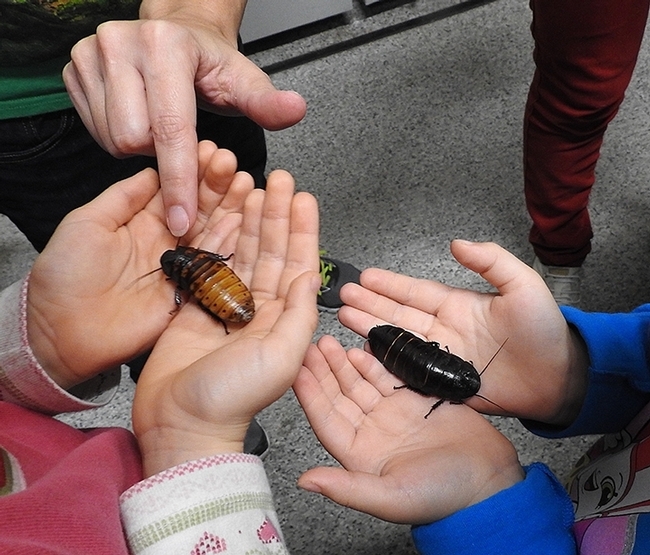
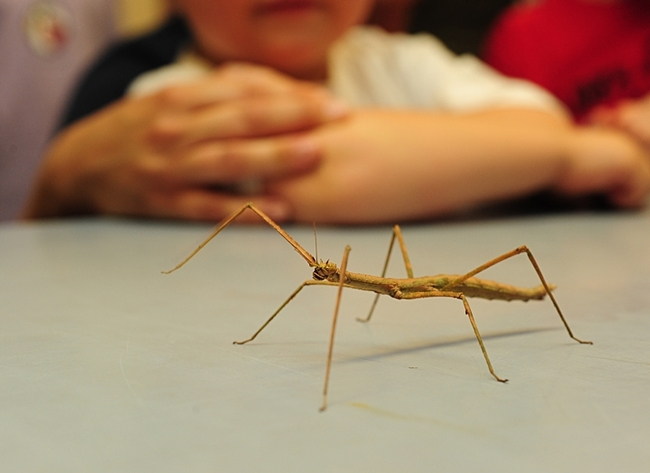
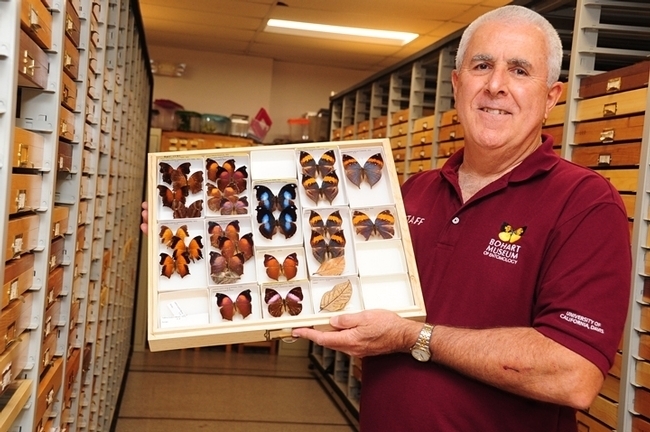
- Author: Kathy Keatley Garvey
What a night--both inside and outside the Bohart Museum of Entomology at the University of California, Davis on Saturday, July 21.
While moths and other insects fluttered to the blacklighting display, visitors flocked inside the museum to see the specimens, and engage one-on-one with scientists.
The UC Davis event was the first in a series of summer weekend programs. In fact, "Moth Night" is the only Bohart Museum public event held at night; it takes place annually in conjunction with National Moth Week, a celebration of the beauty, life cycles and habitats of moths. (See yesterday's Bug Squad blog on blacklighting and the moth families recorded by "Moth Man" John DeBenedictis.)
Inside the Bohart Museum last Saturday, retired entomologist Norm Smith, who received his doctorate at UC Davis studying with major professor Richard Bohart (for whom the museum is named) fielded questions about moths and field collecting, as did senior museum scientist Steve Heydon, and Bohart Museum associates Jeff Smith (who curates the butterfly and moth section) of Rocklin; Greg Kareofelas of Davis, naturalist and insect photographer; entomologist Fran Keller, assistant professor at Folsom Lake College (she holds a doctorate in entomology from UC Davis) and entomologist and college student Noah Crockette of Sacramento.
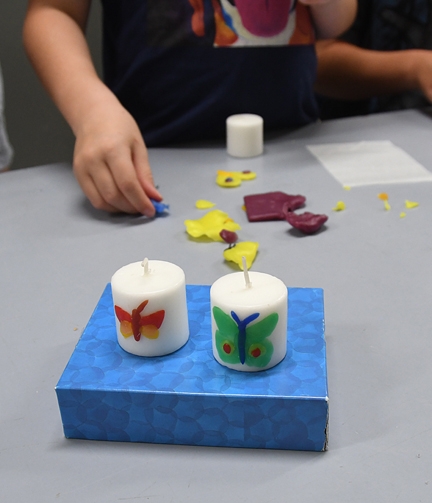
Among the specimen attractions was the white witch moth (Thysania agrippina), which at 11 inches, holds the record for largest wingspan in insects. The caterpillar of this moth can reach 7 inches long. The species is found in Mexico and Central and South America.
Moths are among the most diverse and successful organisms on earth. Scientists estimate there are 150,000 to more than 500,000 moth species. Most are nocturnal.
Visitors enjoyed cookies and hot chocolate. Common Grounds, a Davis coffee shop, provided the large containers of hot water, said Tabatha Yang, education and outreach coordinator. The family craft activity involved decorating wax candles with moth and butterfly replicas.
Meanwhile, Bohart officials are gearing up for the two remaining summer programs, which are free, open to the public, and family friendly:
- "Fire and Ice: Extreme California Insects," set from 1 to 4 p.m., Sunday, Aug. 19.
- "Crafty Insects," set from 1 to 4 p.m., Saturday, Sept. 22.
The Bohart Museum is located in held Room 1124 of the Academic Surge Building, Crocker Lane. Directed by Lynn Kimsey, professor of entomology at UC Davis, the museum houses a global collection of nearly eight million specimens. It is also the home of the seventh largest insect collection in North America, and the California Insect Survey, a storehouse of the insect biodiversity. In addition to the petting zoo, the museum features a year-around gift shop, which is stocked with T-shirts, sweatshirts, books, jewelry, posters, insect-collecting equipment and insect-themed candy.
The Bohart Museum's regular hours are from 9 a.m. to noon and 1 to 5 p.m. Mondays through Thursdays. It is closed to the public on Fridays, Saturdays and Sundays and on major holidays. Admission is free.
More information on the Bohart Museum is available on the website or by contacting (530) 752-0493 or emailing bmuseum@ucdavis.edu.
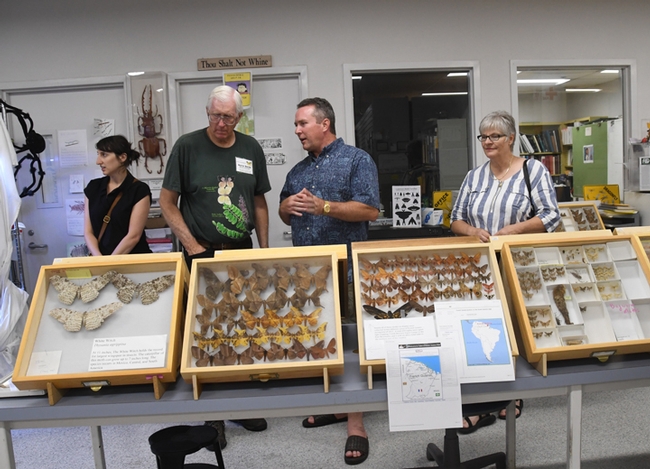
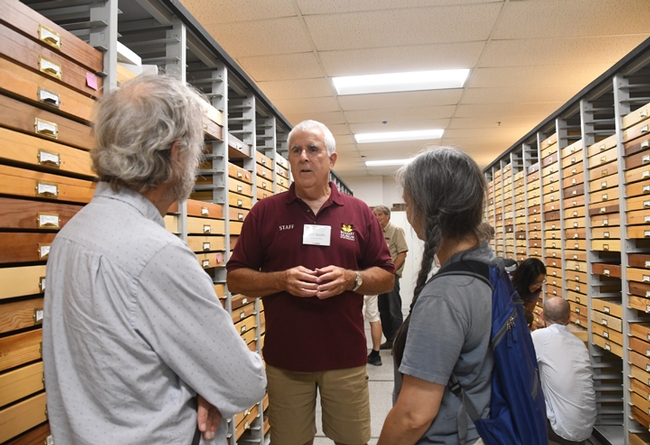
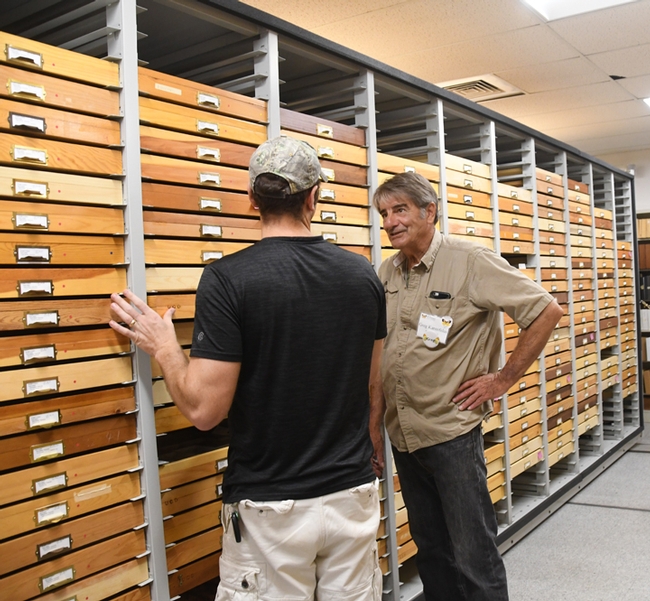
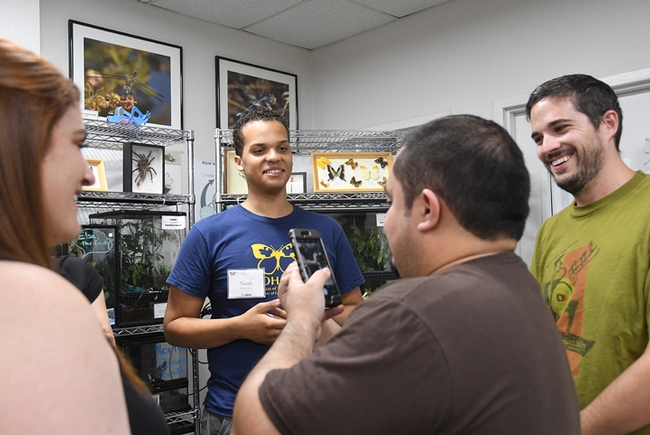
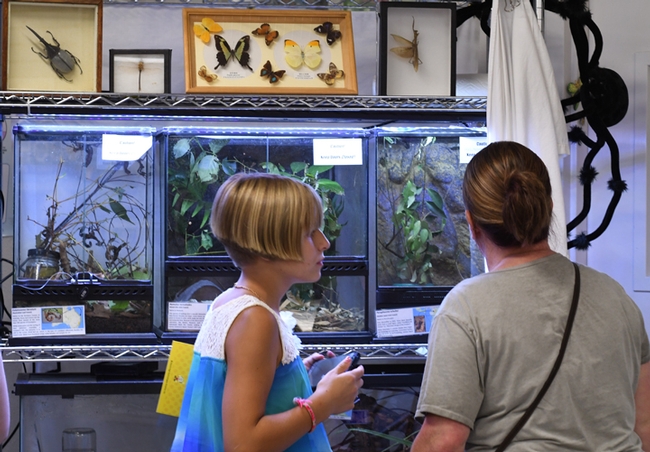
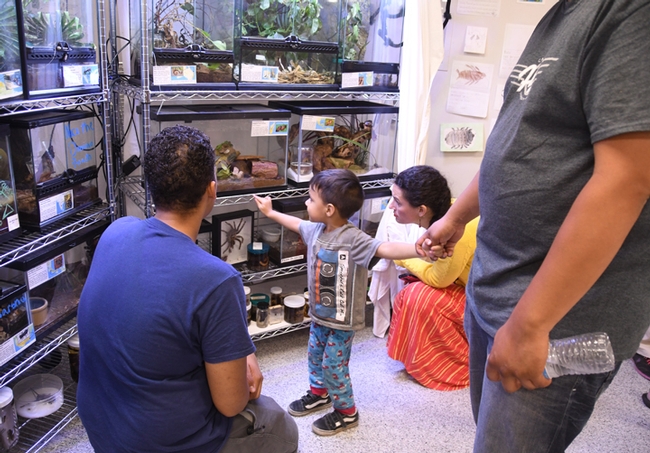
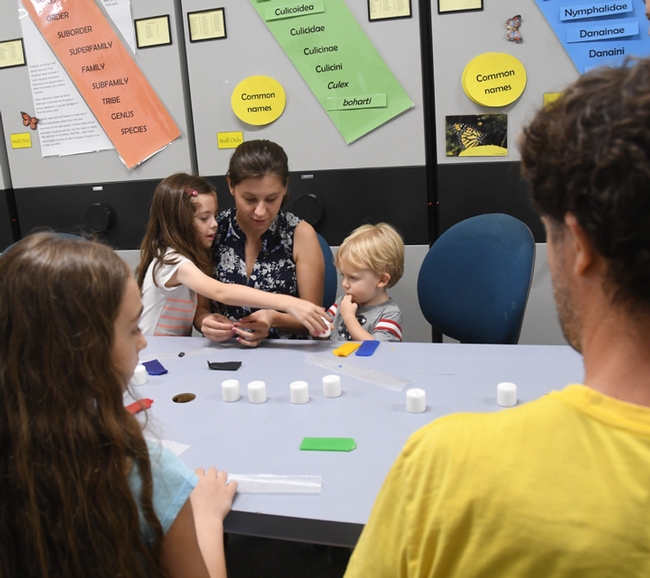
- Author: Kathy Keatley Garvey
UC Davis Chancellor Gary May, a Star Trek enthusiast, coined that theme last year when he launched the university's 10-year strategic planning process. It's aimed at bringing together everyone's bold ideas to “propel us to accomplish things we've only dreamed of in the past.”
So does the chancellor “boldy go” into a museum with nearly eight million insect specimens and a live “petting zoo” of Madagascar hissing cockroaches, walking insects, scorpions, tarantulas and praying mantises?
Does he "boldly go" to see a rose-haired tarantula named Coco McFluffin, a scorpion named Hamilton, and an orchid praying mantis named Marsha? And dozens of Madagascar hissing cockroaches fondly nicknamed “Hissers?”
He does. Of course, he does!
On Tuesday afternoon, Chancellor May and Helene Dillard, dean of the UC Davis College of Agricultural and Environmental Sciences--accompanied by a small contingent--toured the research-and-education-oriented Bohart Museum of Entomology in the Academic Surge Building on Crocker Lane.
May, an accomplished scholar/engineer/administrator and former dean of Georgia Institute of Technology's College of Engineering, became the seventh UC Davis chancellor on Aug. 1, 2017. Known as a dynamic and innovative leader, the chancellor today leads “the most comprehensive campus in the University of California system, with four colleges and six professional schools that offer 104 undergraduate majors and 96 graduate and professional degrees. UC Davis enrolls about 37,000 students, brings in nearly $800 million annually in sponsored research and contributes at least $8 billion to the California economy each year,” according to the UC Davis News Service.
This was his first official visit to the Bohart Museum, a world-renowned museum that's part of the UC Davis Department of Entomology and Nematology. Those welcoming the UC Davis administrators included Bohart Museum director Lynn Kimsey, UC Davis professor of entomology; Steve Nadler, chair of the UC Davis Department of Entomology and Nematology; senior museum scientist Steve Heydon; Tabatha Yang, the museum's education and outreach coordinator; and Jeff Smith, curator of the butterfly and moth collection.
The Bohart Museum traces its roots back to 1946 in Briggs Hall, where it began as a teaching-and-research tool--and began humbly, Kimsey told the entourage. It consisted of two Schmitt boxes but grew steadily with the help of several faculty members, students and donors. By 1969 the number of specimens had totaled more than 100,000. Today the global collection houses nearly eight million specimens.
The museum is named for its founder, celebrated entomologist Richard Mitchell Bohart (1913-2007), whose UC Davis career spanned more than 50 years. He established the research-oriented collection in 1946--the same year he joined the UC Davis faculty--and contributed scores of specimens: Hymenoptera (bees, wasps and ants), Diptera (flies) and Strepsiptera (twisted wing parasites). He chaired the Department of Entomology from 1963 to 1976. He later served as major professor to a young entomology graduate student named Lynn Kimsey, eager to study the taxonomy of bees and wasps and insect diversity. Kimsey, who received her doctorate in 1979, joined the UC Davis faculty in 1989, the same year she was named director of the collection. Like her mentor, she has also chaired the department (2008-2009).
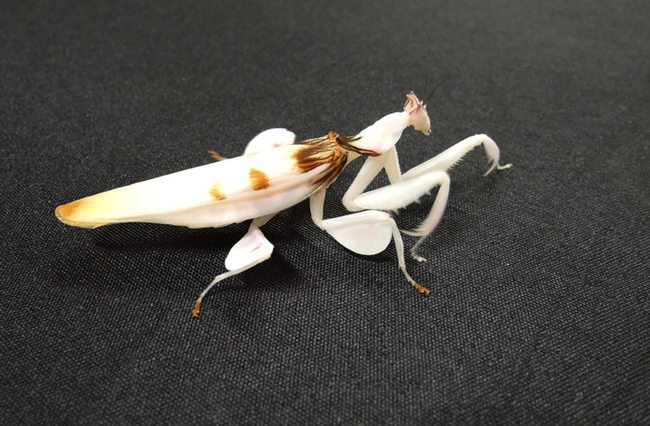
As they walked around the insect museum, Chancellor May and Dean Hillard admired trays of butterflies; watched students working on specimens; thumbed through a macro insect photography book by Levon Biss of the Oxford Museum of Natural History, England; and greeted the permanent and temporary residents of the petting zoo. Madagascar hissing cockroaches and walking sticks (stick insects) adorned the shoulders of UC Davis entomology student Wade Spencer, "zookeeper" of the petting zoo. He also cradled his favorite scorpion named Hamilton. Explaining that scorpions fluoresce under ultraviolet light, Kimsey illuminated Hamilton. The arachnid glowed a blue-green neon; the glow comes from a substance in the hyaline layer, part of the scorpion's exoskeleton, they explained.
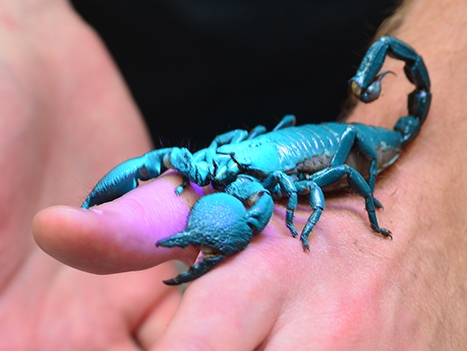
Children who visit the Bohart Museum delight in the petting zoo, Kimsey said. Among the 2017 visitors: public and private school students; Girl and Boy Scouts; 4-H'ers; and youngsters from the Tulare County Office of Education's Migrant Education Program. Following their visit, most of the Tulare group, ages 8-11, vowed to become entomologists.
"All the kids are told when they come in that there are three words they are not allowed to use here," Kimsey said. "They are yuck, eww and gross."
But, she quipped, "they can say frass."
Frass is insect excrement.
(Editor's Note: The Bohart Museum is open to the public Monday through Thursdays, 9 a.m. to noon and 1 to 5 p.m., and also holds weekend open houses periodically during the academic year. Admission is free. The Bohart will be open on Saturday, Feb. 17 from 9 a.m. to 1 p.m. as part of the campuswide (and free) Biodiversity Museum Day, featuring 13 museums or collections.)
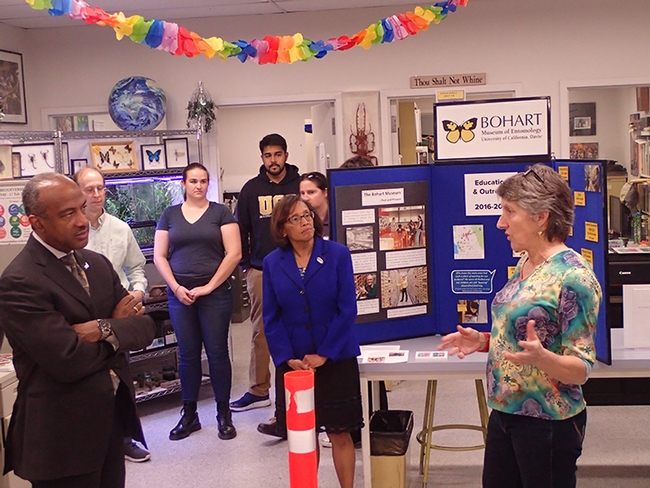
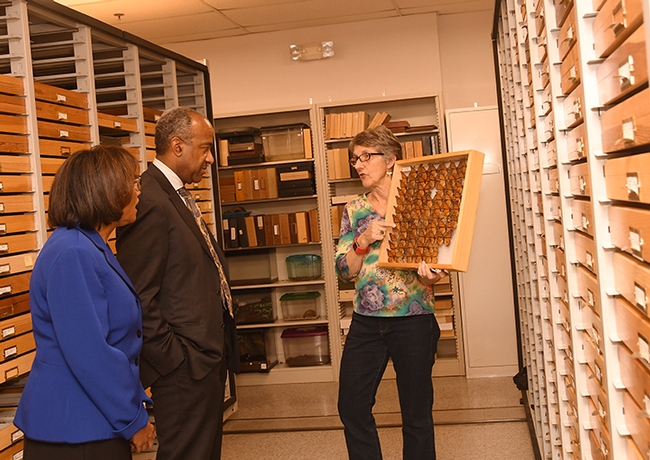
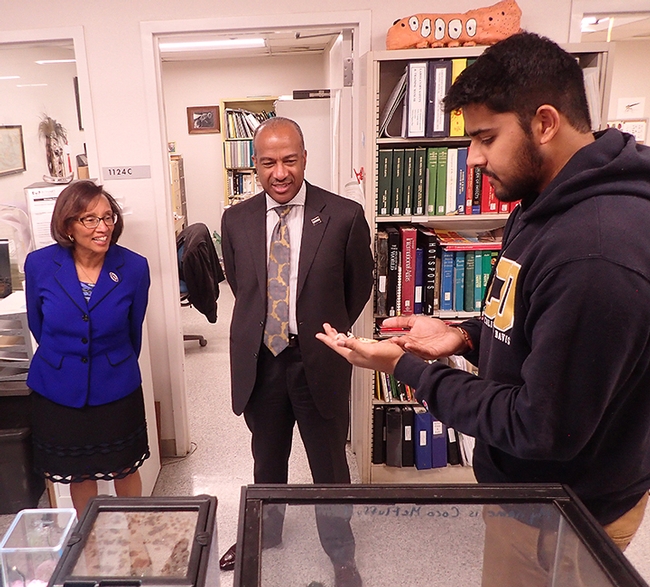
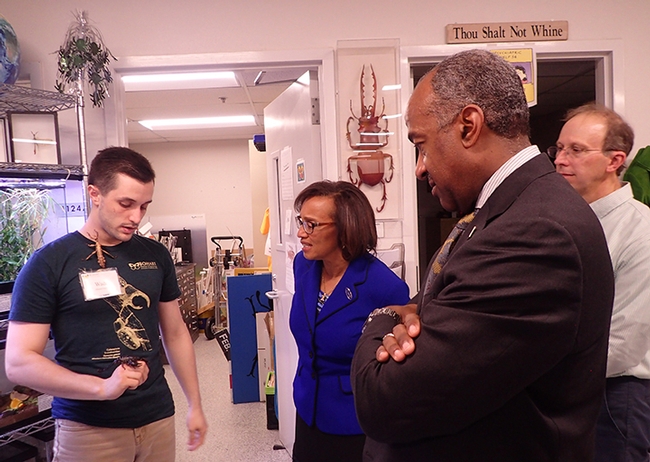
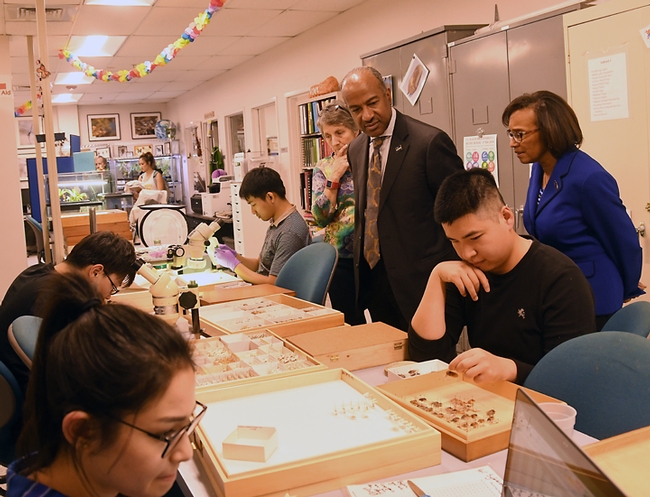
- Author: Kathy Keatley Garvey

There's a donate button on its website. All gifts are tax-deductible.
The Bohart Museum, home of nearly eight million insect specimens from around the world, also has a year-around gift shop (think t-shirts, posters, books, jewelry and insect-collecting equipment) and a live "petting zoo," consisting of about 200 critters, ranging from Madagascar hissing cockroaches to tarantulas to walking sticks.
Directed by Lynn Kimsey, professor of entomology at UC Davis, the museum is located in Room 1124 of the Academic Surge building. Admission is free. It's open to the public Monday through Thursday, except on holidays. (See calenar on the home page)
A little information about the Bohart Museum, per Lynn Kimsey:
- We connect with nearly 15,000 visitors, both at the museum, in classrooms and through public events
- We identify more than 1000 unknown insects each year, guiding consumers to appropriate and cost-effective control strategies when needed.
- Helping people understand insects and spiders is one of the things we do best
State budget cuts "have a deep impact on the UC system, including the Bohart Museum," Kimsey points out. Here are examples of what donations from $20 to $1000 can mean:
- $20 donation: A teacher can borrow "Oh, My" boxes (educational specimen displays) and live animals to enhance their lesson plans
- $100 donation: New traveling exhibit boxes can be developed to meet the educational needs of teachers
- $200 donation: Bohart educators can visit a school and work with multiple classes to teach them about insects in an engaging hands-on manner
- $1000 donation: This supports an undergraduate student working in the museum for one quarter. With tuition and fees increasing, students need paying jobs. Working in the museum alongside scientists, and learning about insects can be a life-changing experience.
Through donations, the Bohart can better serve the community "and you (donor) may even inspire a new bug lover!" Kimsey says. Folks can also join the Bohart Museum Society; membership has its privileges. In addition, newly discovered insects can be named for a loved one. For more information and details, contact (530) 752-0493 or bmuseum@ucdavis.edu.


